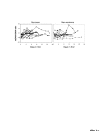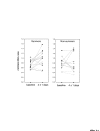Longitudinal increases in mitochondrial DNA levels in blood cells are associated with survival in critically ill patients
- PMID: 17697385
- PMCID: PMC2206483
- DOI: 10.1186/cc6096
Longitudinal increases in mitochondrial DNA levels in blood cells are associated with survival in critically ill patients
Abstract
Background: Mitochondrial dysfunction may be causally related to the pathogenesis of organ failure in critically ill patients. Decreased mitochondrial DNA (mtDNA) levels have been associated with mitochondrial dysfunction and were investigated here in relation to short-term (31-day) survival.
Methods: This was a prospective longitudinal cohort study of 28 mechanically ventilated critically ill adults admitted to a single center tertiary care intensive care unit (ICU) with hypotension secondary to cardiogenic (N = 13), septic (N = 14) or hypovolemic (N = 1) disease processes. Clinical data and blood were collected at baseline and patients were followed until they expired or left the ICU. Blood was collected every Monday, Wednesday and Friday, and the buffycoat relative mtDNA/nuclear DNA (nDNA) ratio was determined. An archived pool of healthy controls was also studied.
Results: At baseline, the patients' mtDNA/nDNA ratio was 30% lower than a pool of 24 healthy controls (0.76 versus 1.09) and was not different between short-term survivors and non-survivors (0.74 +/- 0.05 (N = 16) versus 0.79 +/- 0.06 (N = 12), p = 0.49). By day 4, the percent mtDNA/nDNA change from baseline in survivors was significantly different from that in non-survivors (+29.5% versus -5.7%, p = 0.03). It also tended to be higher in survivors at last measurement (+38.4% versus +7.1%, p = 0.06). There was a weak correlation between within patient mtDNA/nDNA and platelet count (r = 0.20, p = 0.03) but not with Sequential Organ Failure Assessment (SOFA) scores (r = 0.12, p = 0.23). The mtDNA associations remained after adjustment for platelet.
Conclusion: Blood mtDNA levels appeared initially low, increased over time in patients who ultimately survived, and remained low in those who did not. This is consistent with mitochondrial recovery being associated with survival and warrants further investigation as a marker of mitochondrial alterations and outcome in critical illness.
Figures


Comment in
-
Deficient mitochondrial biogenesis in critical illness: cause, effect, or epiphenomenon?Crit Care. 2007;11(4):158. doi: 10.1186/cc6098. Crit Care. 2007. PMID: 17764588 Free PMC article.
Similar articles
-
Plasma Nuclear and Mitochondrial DNA Levels, and Markers of Inflammation, Shock, and Organ Damage in Patients with Septic Shock.Shock. 2016 Jun;45(6):607-12. doi: 10.1097/SHK.0000000000000549. Shock. 2016. PMID: 26717107
-
Platelet count decline: an early prognostic marker in critically ill patients with prolonged ICU stays.Chest. 2007 Jun;131(6):1735-41. doi: 10.1378/chest.06-2233. Epub 2007 May 2. Chest. 2007. PMID: 17475637
-
Time course of platelet counts in critically ill patients.Crit Care Med. 2002 Apr;30(4):753-6. doi: 10.1097/00003246-200204000-00005. Crit Care Med. 2002. PMID: 11940740
-
Circulating Mitochondrial DNA as Predictor of Mortality in Critically Ill Patients: A Systematic Review of Clinical Studies.Chest. 2019 Dec;156(6):1120-1136. doi: 10.1016/j.chest.2019.07.014. Epub 2019 Aug 2. Chest. 2019. PMID: 31381882 Free PMC article.
-
Mitochondrial DNA in Sepsis.Curr Opin Crit Care. 2017 Aug;23(4):284-290. doi: 10.1097/MCC.0000000000000427. Curr Opin Crit Care. 2017. PMID: 28562385 Free PMC article. Review.
Cited by
-
Mechanical ventilation and Streptococcus pneumoniae pneumonia alter mitochondrial homeostasis.Sci Rep. 2018 Aug 6;8(1):11718. doi: 10.1038/s41598-018-30226-x. Sci Rep. 2018. PMID: 30082877 Free PMC article.
-
Automated mitochondrial oxygen consumption (mitoVO2) analysis via a bi-directional long short-term memory neural network.J Clin Monit Comput. 2025 Mar 30. doi: 10.1007/s10877-025-01291-1. Online ahead of print. J Clin Monit Comput. 2025. PMID: 40159587
-
Mitochondrial DNA copy number, but not haplogroup, confers a genetic susceptibility to leprosy in Han Chinese from Southwest China.PLoS One. 2012;7(6):e38848. doi: 10.1371/journal.pone.0038848. Epub 2012 Jun 18. PLoS One. 2012. PMID: 22719964 Free PMC article.
-
Distinct mitochondrial respiration profiles in pediatric patients with febrile illness versus sepsis.Pediatr Res. 2025 Feb;97(3):1127-1133. doi: 10.1038/s41390-024-03420-z. Epub 2024 Aug 3. Pediatr Res. 2025. PMID: 39095577 Free PMC article.
-
Persistent Mitochondrial Dysfunction Linked to Prolonged Organ Dysfunction in Pediatric Sepsis.Crit Care Med. 2019 Oct;47(10):1433-1441. doi: 10.1097/CCM.0000000000003931. Crit Care Med. 2019. PMID: 31385882 Free PMC article.
References
-
- Crouser ED, Julian MW, Dorinsky PM. Ileal VO(2)-O(2) alterations induced by endotoxin correlate with severity of mitochondrial injury. Am J Respir Crit Care Med. 1999;160:1347–1353. - PubMed
Publication types
MeSH terms
Substances
LinkOut - more resources
Full Text Sources

